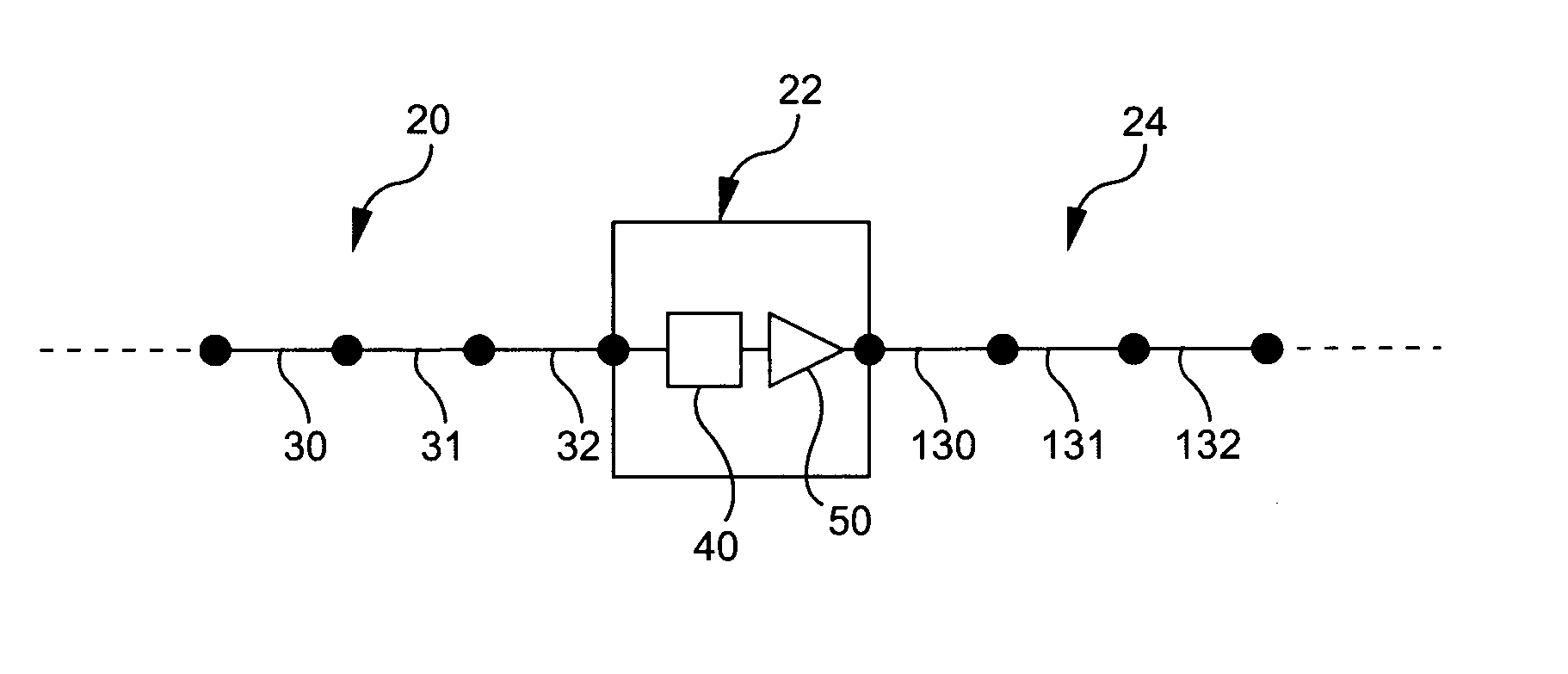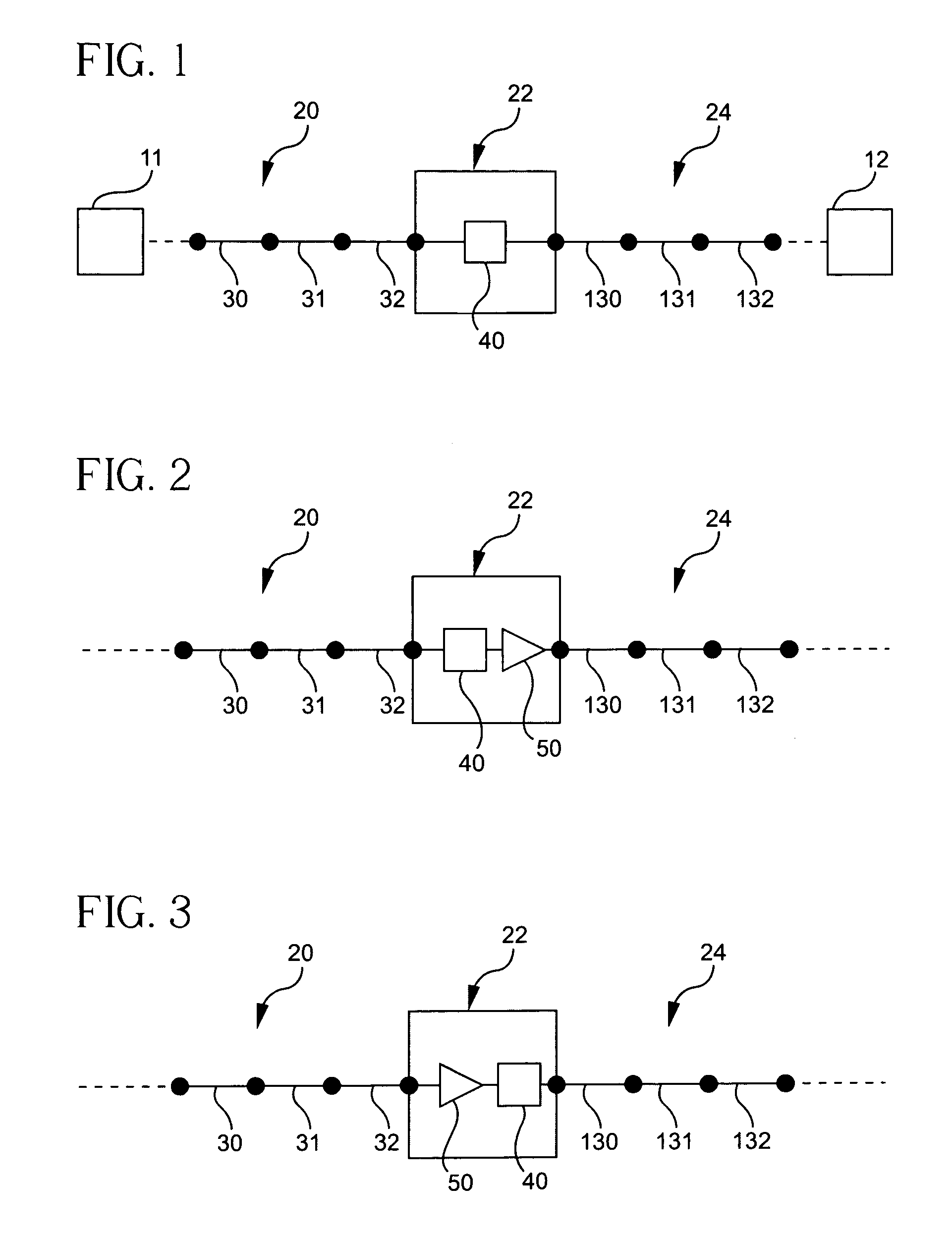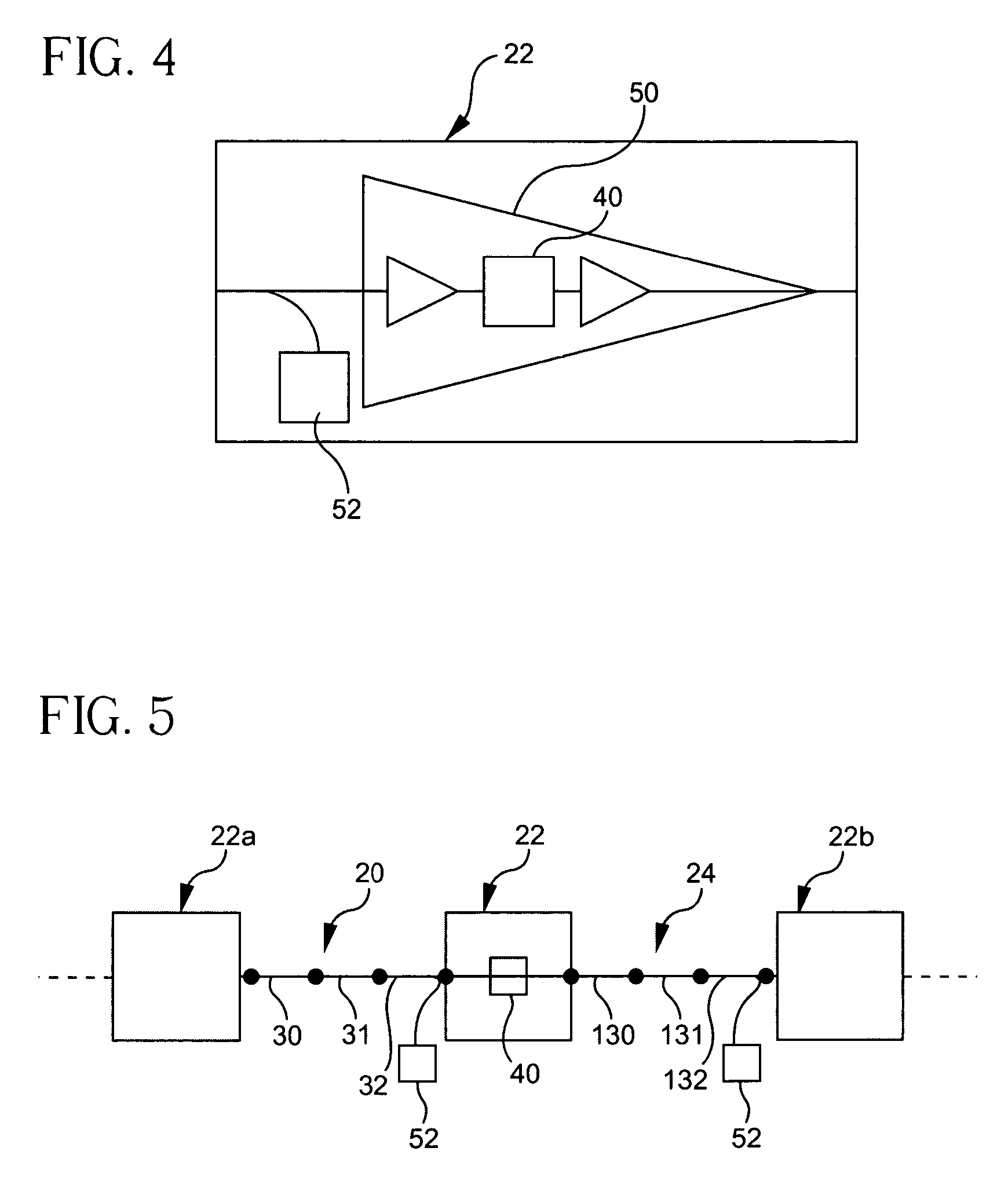Dispersion management with phase conjugation
a phase conjugation and dispersion management technology, applied in the field of optical transmission systems, can solve the problems of high bit rate systems, difficult management, severe limit performance, etc., and achieve the effect of minimizing the effects of nonlinearities
- Summary
- Abstract
- Description
- Claims
- Application Information
AI Technical Summary
Benefits of technology
Problems solved by technology
Method used
Image
Examples
Embodiment Construction
[0047]Preferably, the optical fibers in an optical transmission system are arranged to yield an average chromatic dispersion near zero for all the channels having wavelengths within the transmission wavelength range. Furthermore, the average dispersion of each channel should be substantially different from zero in each transmission span to reduce XPM effects, but should be periodically compensated to limit the accumulated dispersion. The dispersion compensation scheme should result in an increased number of channels over long distances for transmission applications which use a number of channels for transmission, such as wavelength division multiplexing (WDM). Significant cost savings can also be had by eliminating most of the dispersion compensation at the transmitter and receiver ends of the transmission system.
[0048]FIG. 1 is a schematic of an optical transmission system 10 as disclosed herein comprising a first dispersion managed span, or optical fiber line, 20, optically couple...
PUM
 Login to View More
Login to View More Abstract
Description
Claims
Application Information
 Login to View More
Login to View More - R&D
- Intellectual Property
- Life Sciences
- Materials
- Tech Scout
- Unparalleled Data Quality
- Higher Quality Content
- 60% Fewer Hallucinations
Browse by: Latest US Patents, China's latest patents, Technical Efficacy Thesaurus, Application Domain, Technology Topic, Popular Technical Reports.
© 2025 PatSnap. All rights reserved.Legal|Privacy policy|Modern Slavery Act Transparency Statement|Sitemap|About US| Contact US: help@patsnap.com



